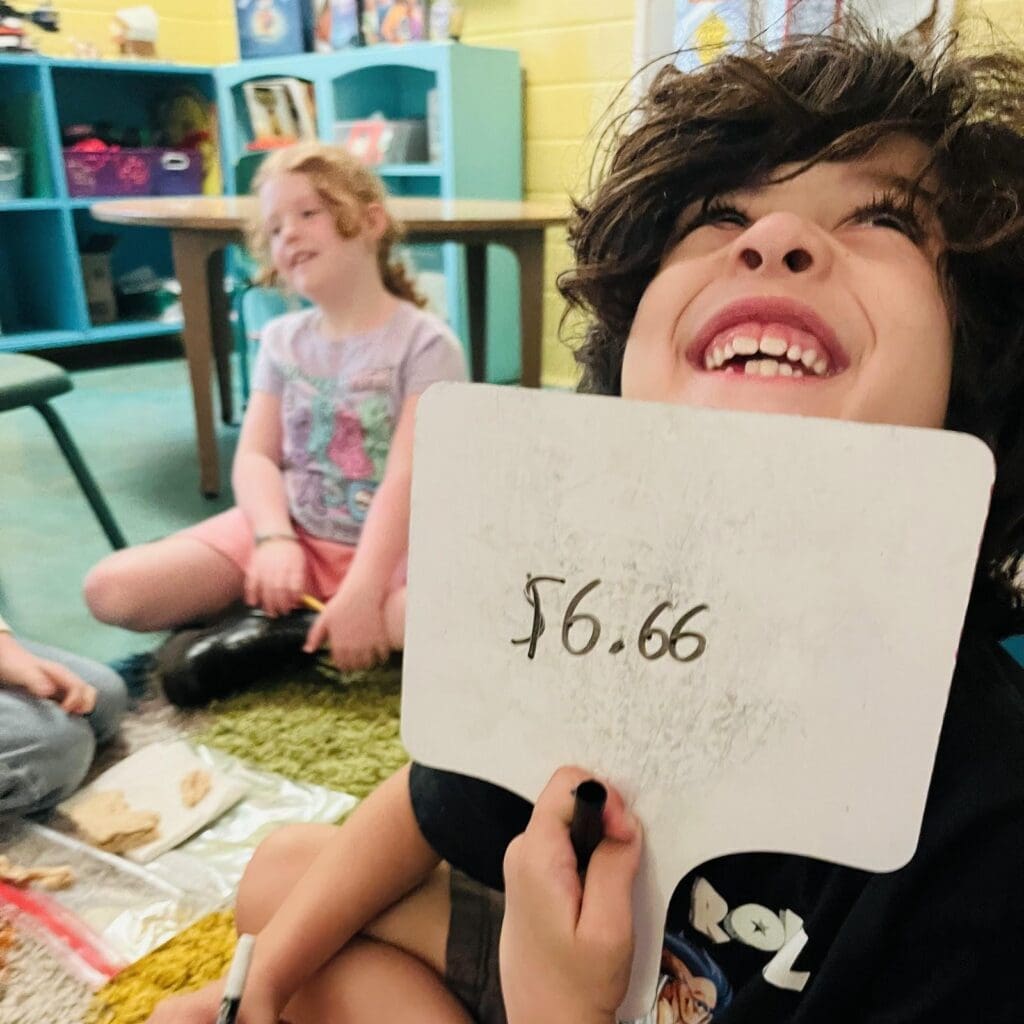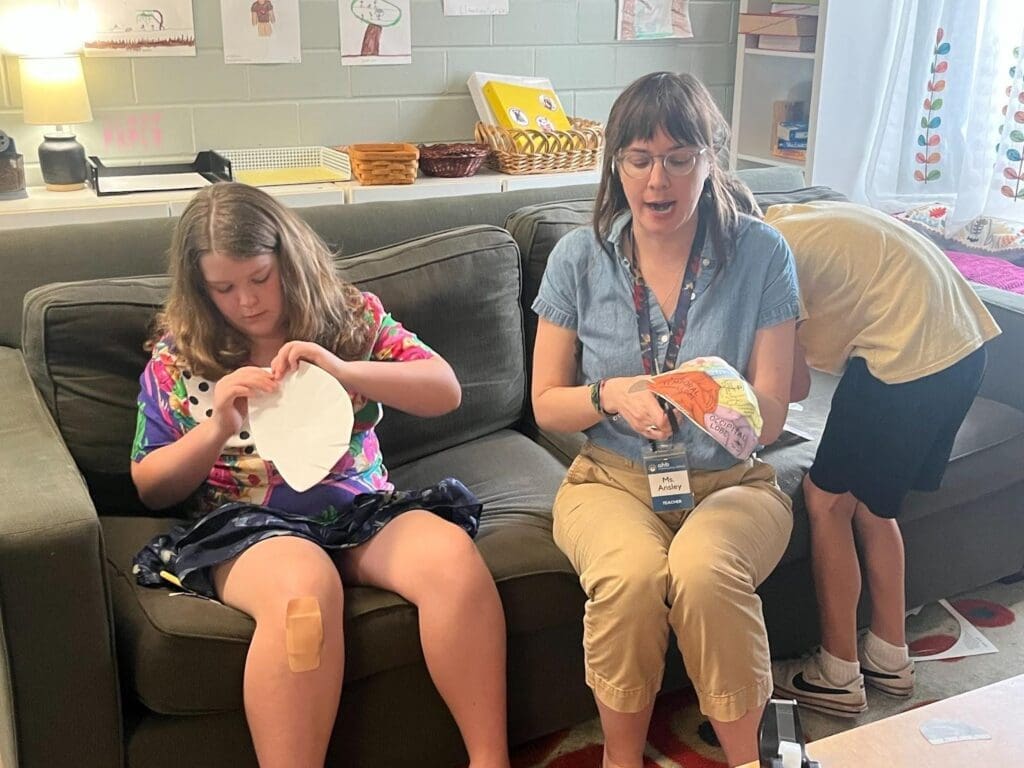Math –
Ms. Kelly’s math group had one busy week! They worked on their last new concept of the year, picture graphs! They discussed what a picture graph is, how they show data, why “keys” are important and then spent time analyzing and creating their very own! These Betas absolutely worked their little tails off on their data and graphing post assessments AND their end of year assessments which covered everything that they learned this year! We are SOOOO PROUD!! Stellar work, mathematicians!
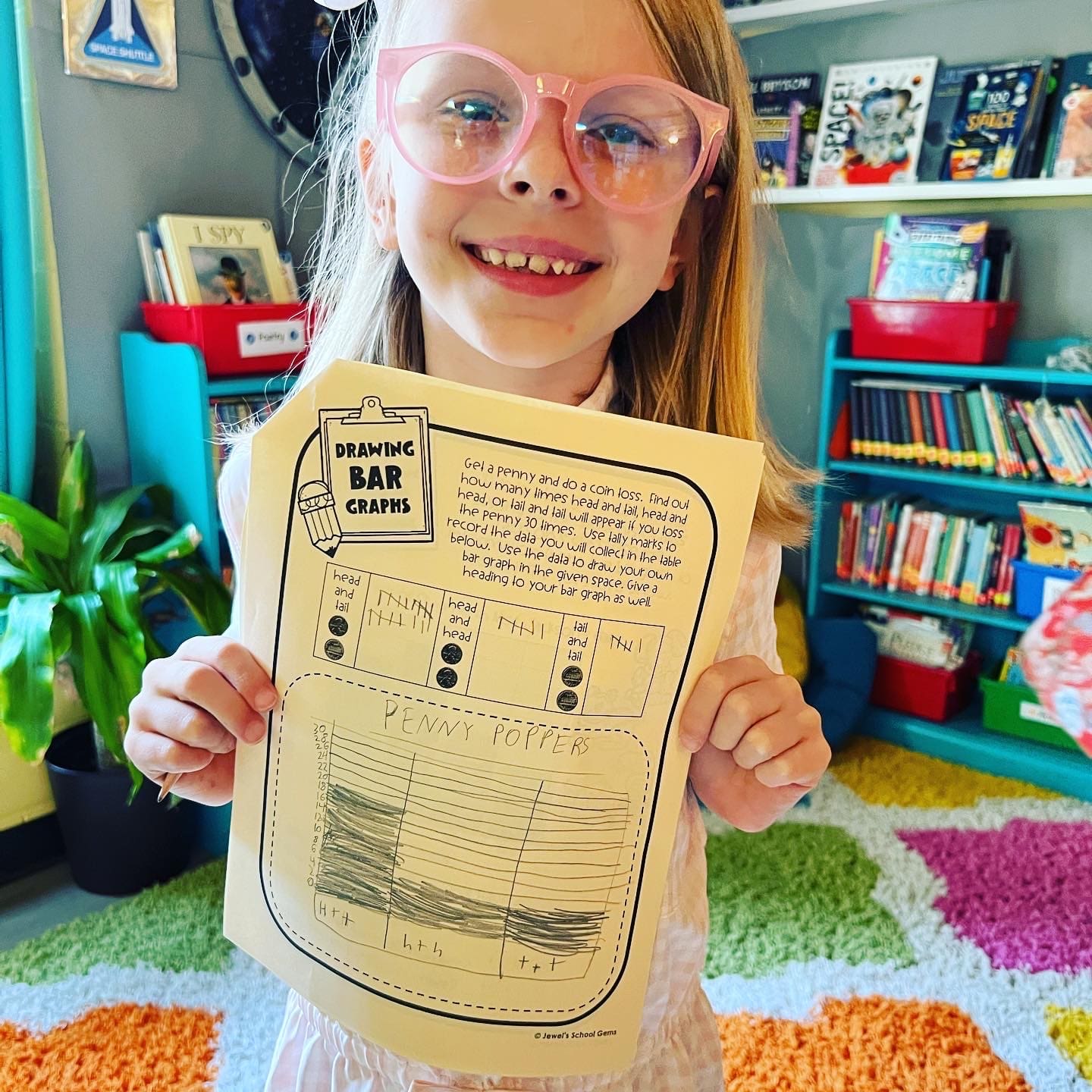 |
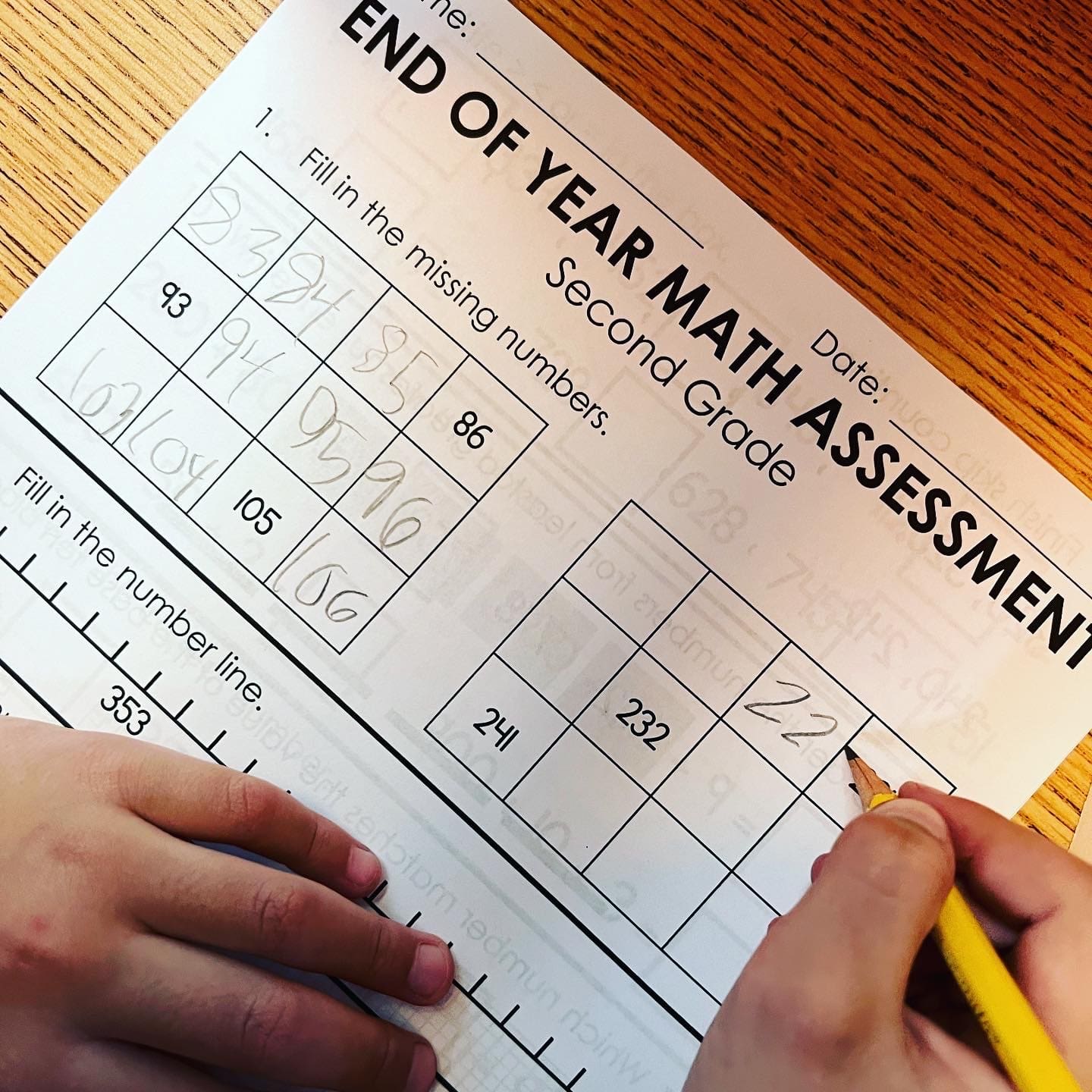 |
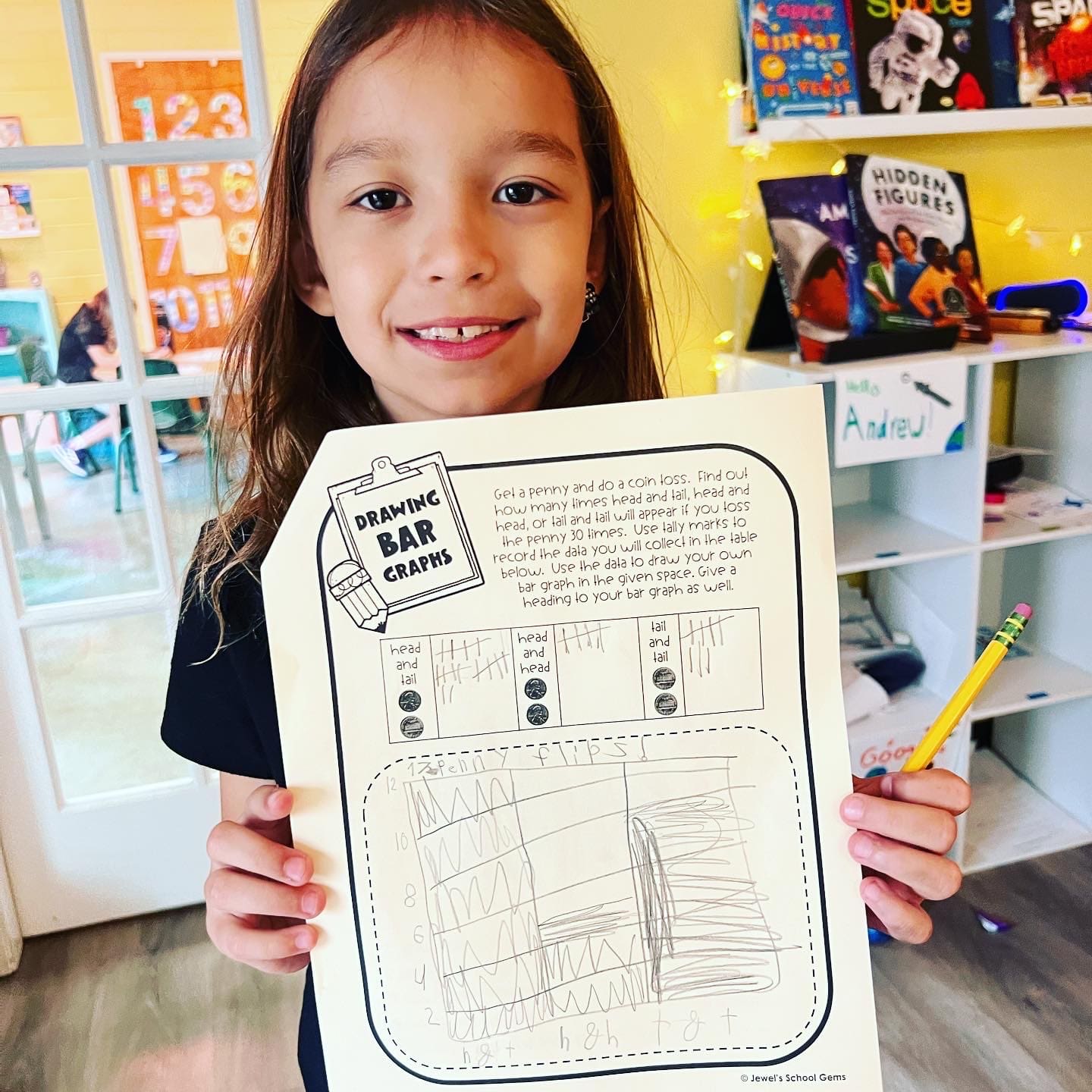 |
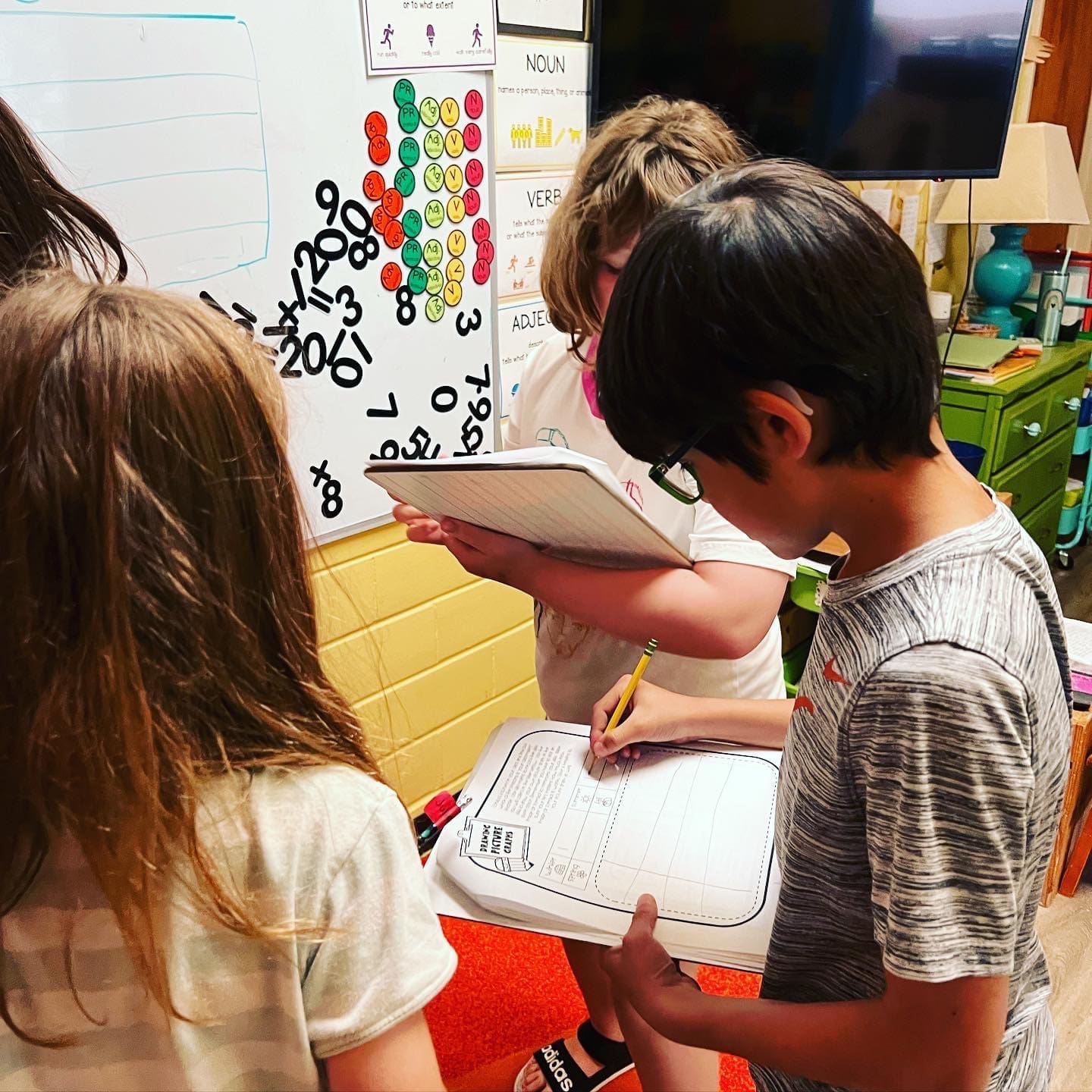 |
|---|
Ms. Skylar’s math group focused all of their energy on area and perimeter this week! They kicked it off by learning how to find the perimeter of regular and irregular shapes without any missing numbers – easy peasy! Then things got a little harder when the measurement on one side of a shape was missing – sometimes they knew the total perimeter and could subtract to solve, other times they needed to cut their shape into smaller pieces in order to solve. Then each kiddo got their own ruler and measured the perimeter of things in our classroom like tables, rugs and window panes! Area next! They learned how to solve area problems on regular and irregular shapes and grid models, using their amazing multiplication skills. They ended their week playing a fun new game called “Conquest”. This game involves rolling two dice, the player must use those two numbers to create a square or rectangle, then the player must find the area and perimeter of their shape before moving on. The player that covers the largest area wins! Next week these Betas take their end of unit assessments and end of year assessments. Fantastic work, mathletes!
 |
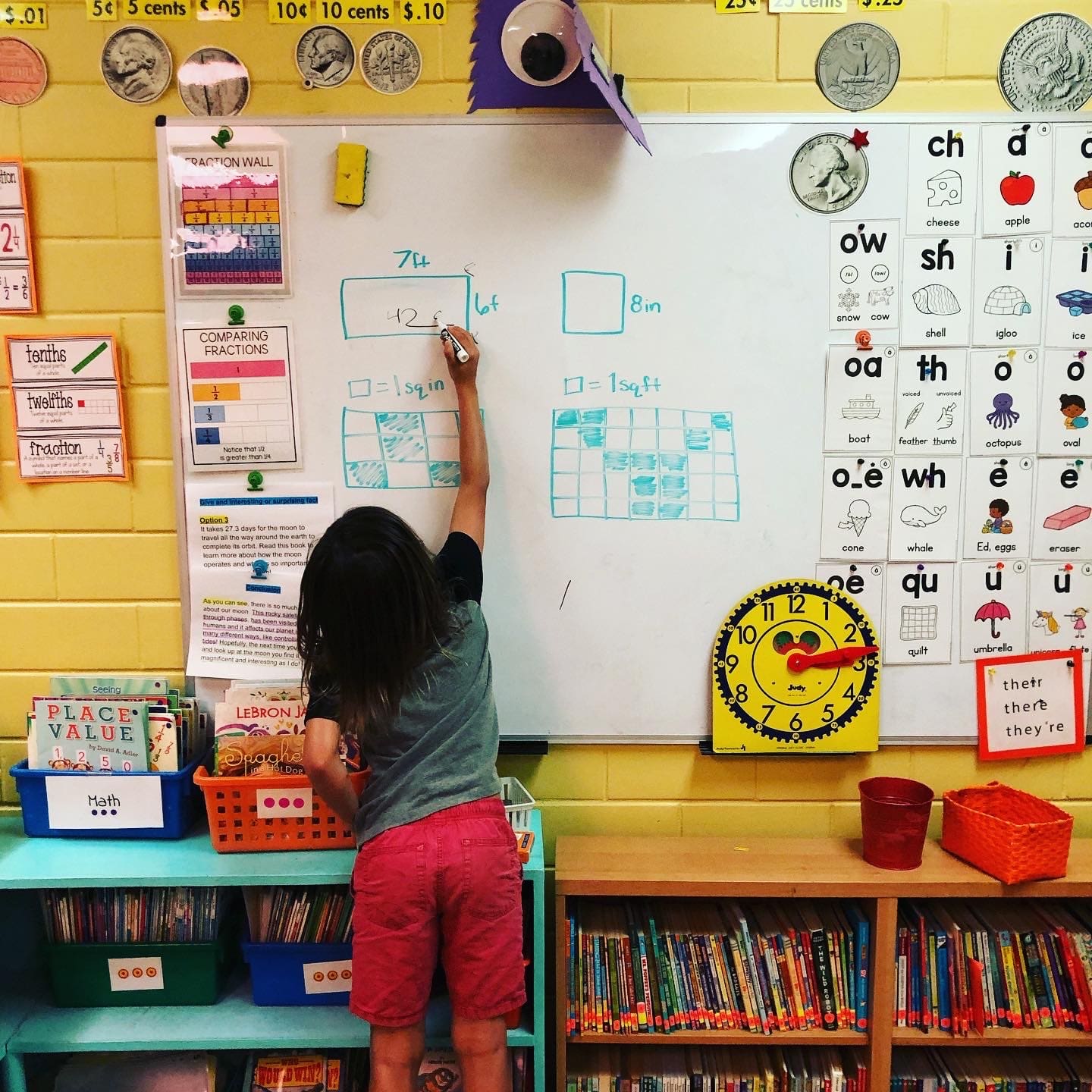 |
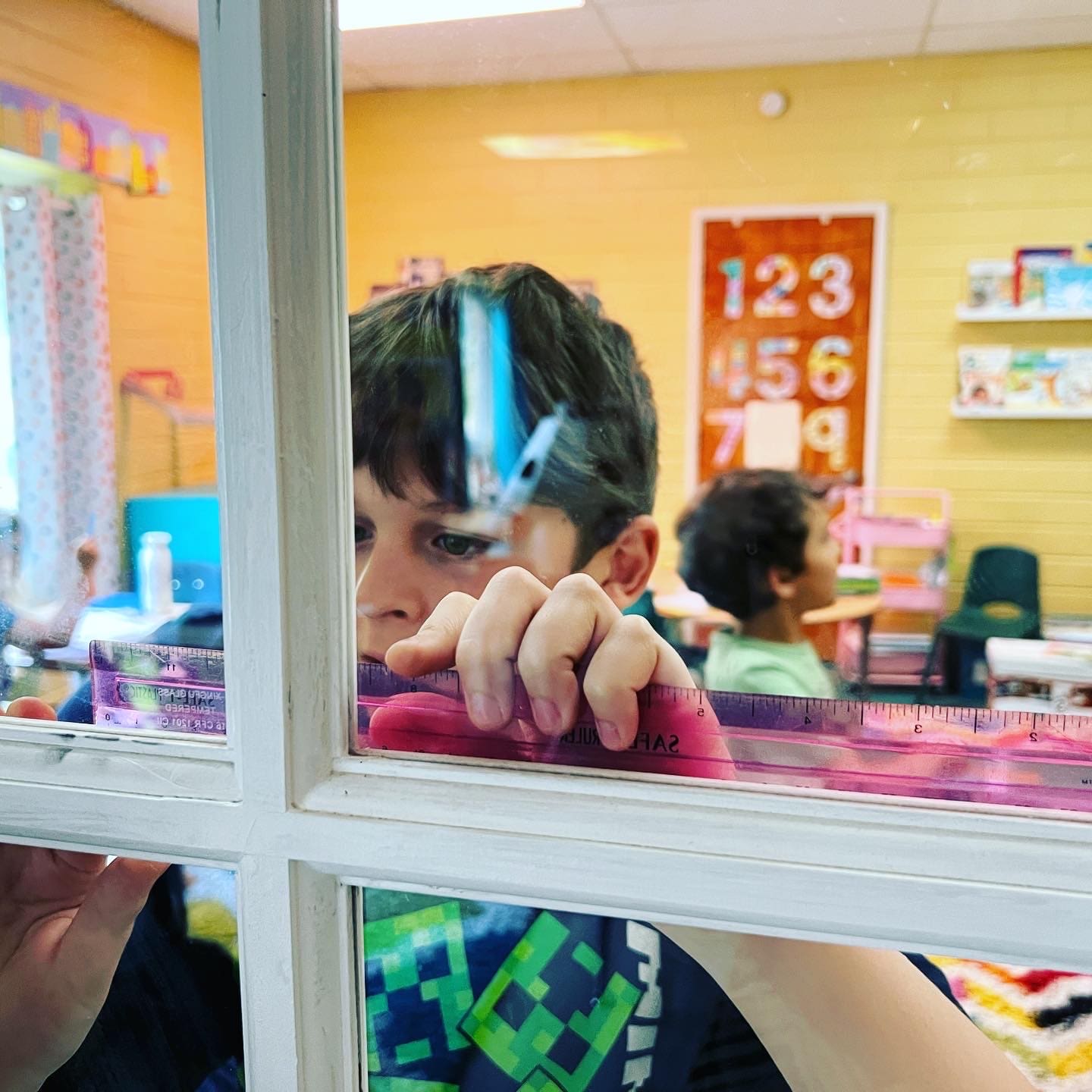 |
 |
|---|
Literacy –
Holy moly have we been busy! This week Ms. Kelly’s been conducting reading assessments and most kiddos are wrapping up their book club books which has allowed for lot’s of reading for pleasure – a lovely bit of respite from the hefty task of answering reading response questions! Our biggest focus has been on our nonfiction books. As of Thursday, every single kiddo has completed their final draft and is onto the pizazzing portion – WOO HOO! They’re designing covers, labeling headings, pasting in their writing and adding extra special details! Next week is dedicated to adding all of the finishing touches – we can’t wait for y’all to read and admire them!!
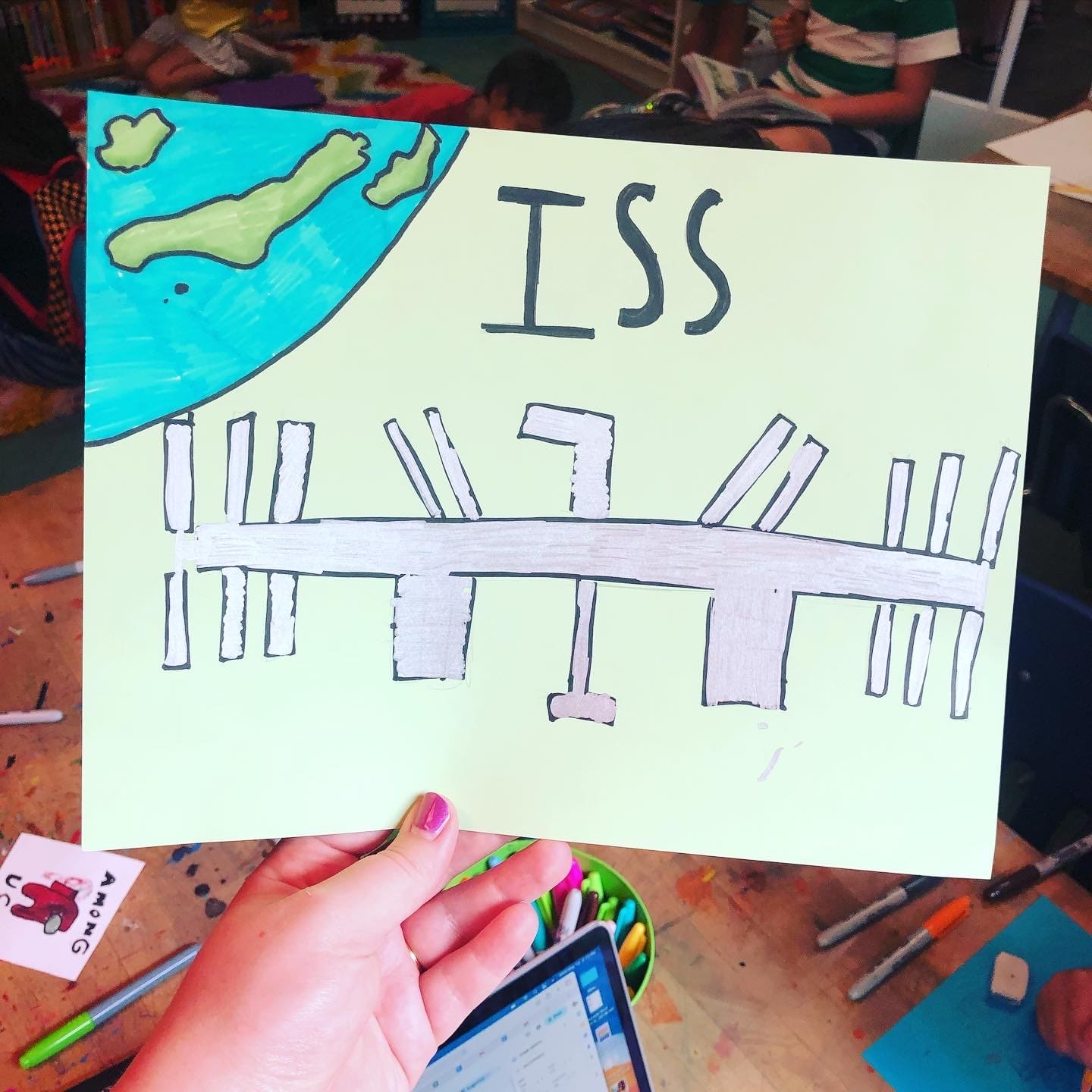 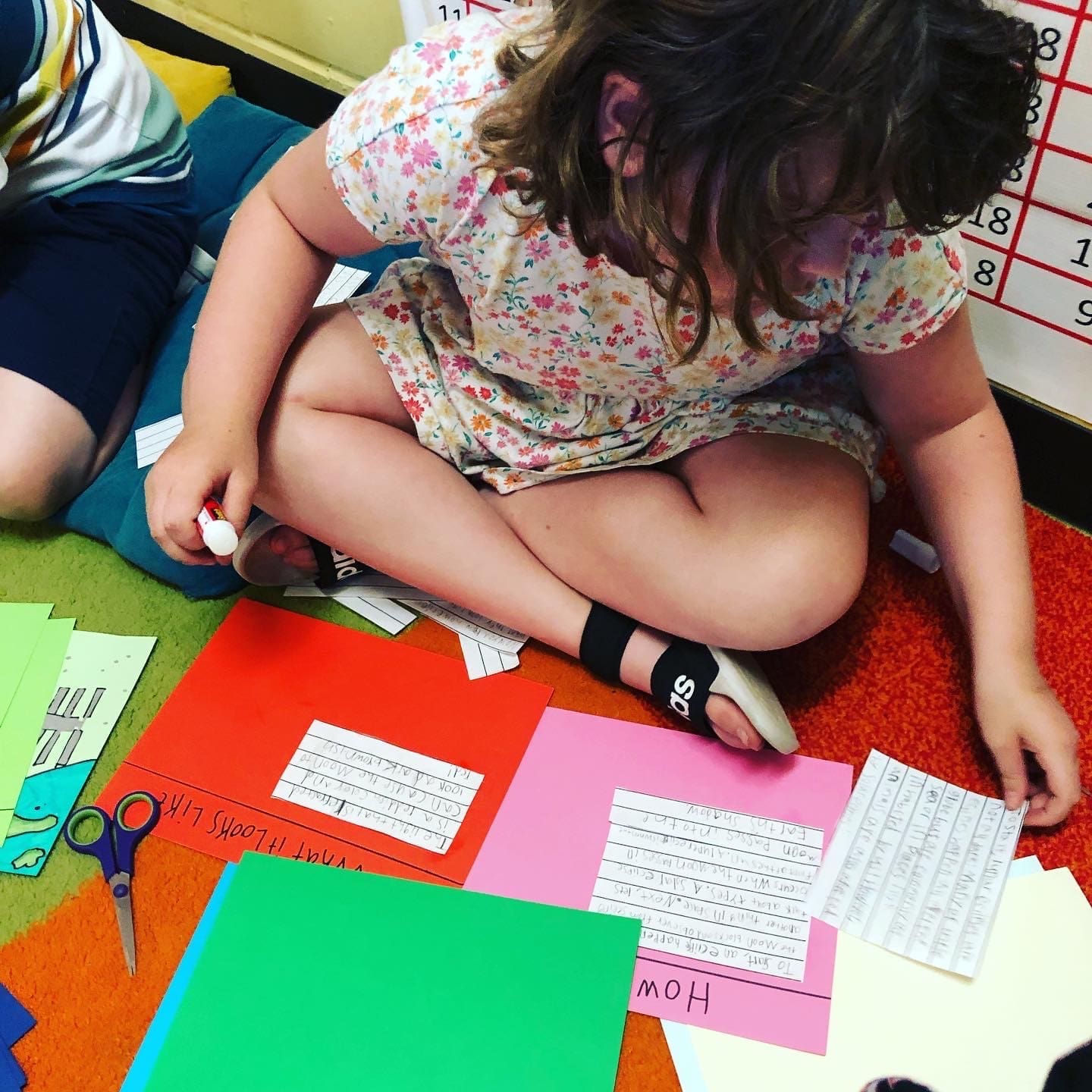 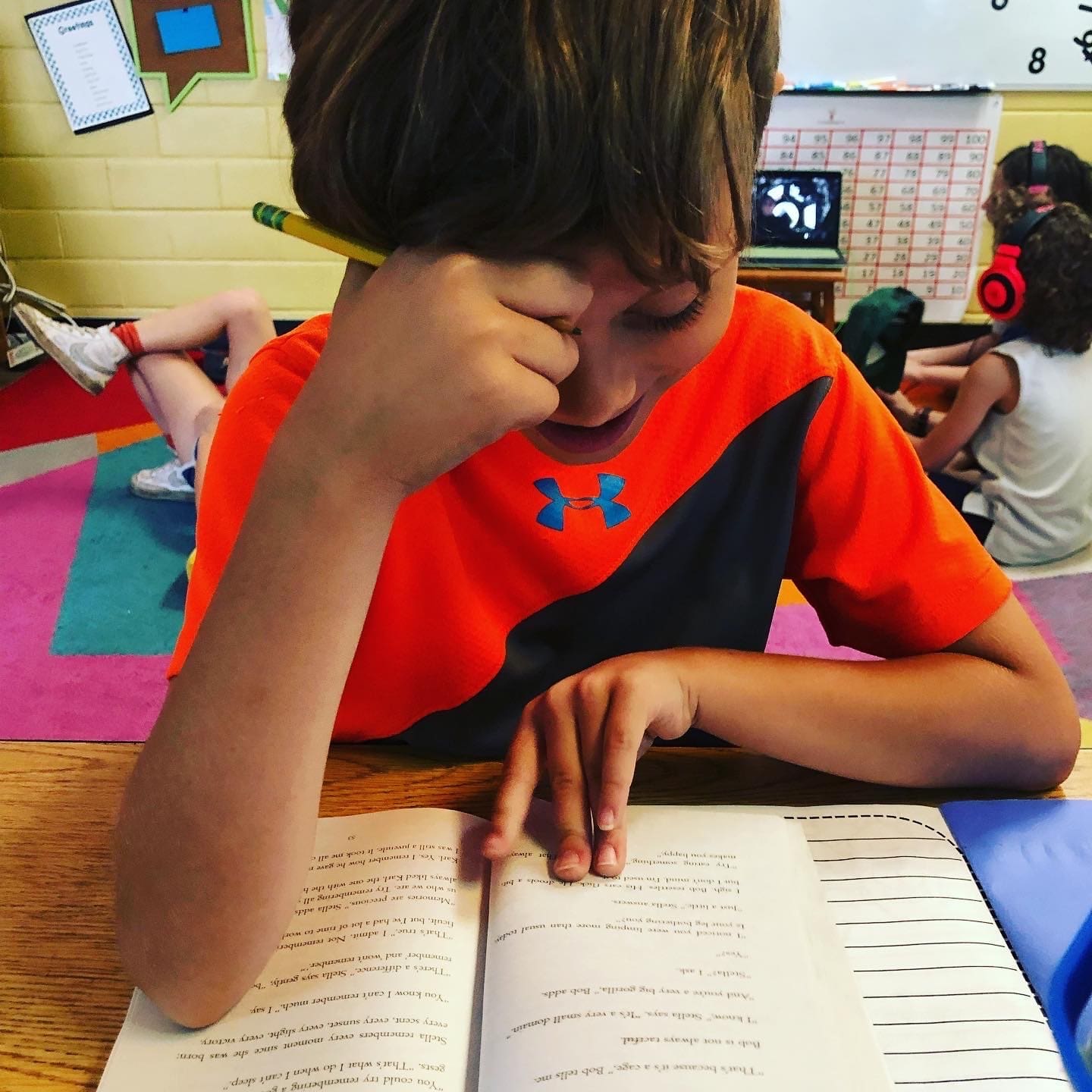
|
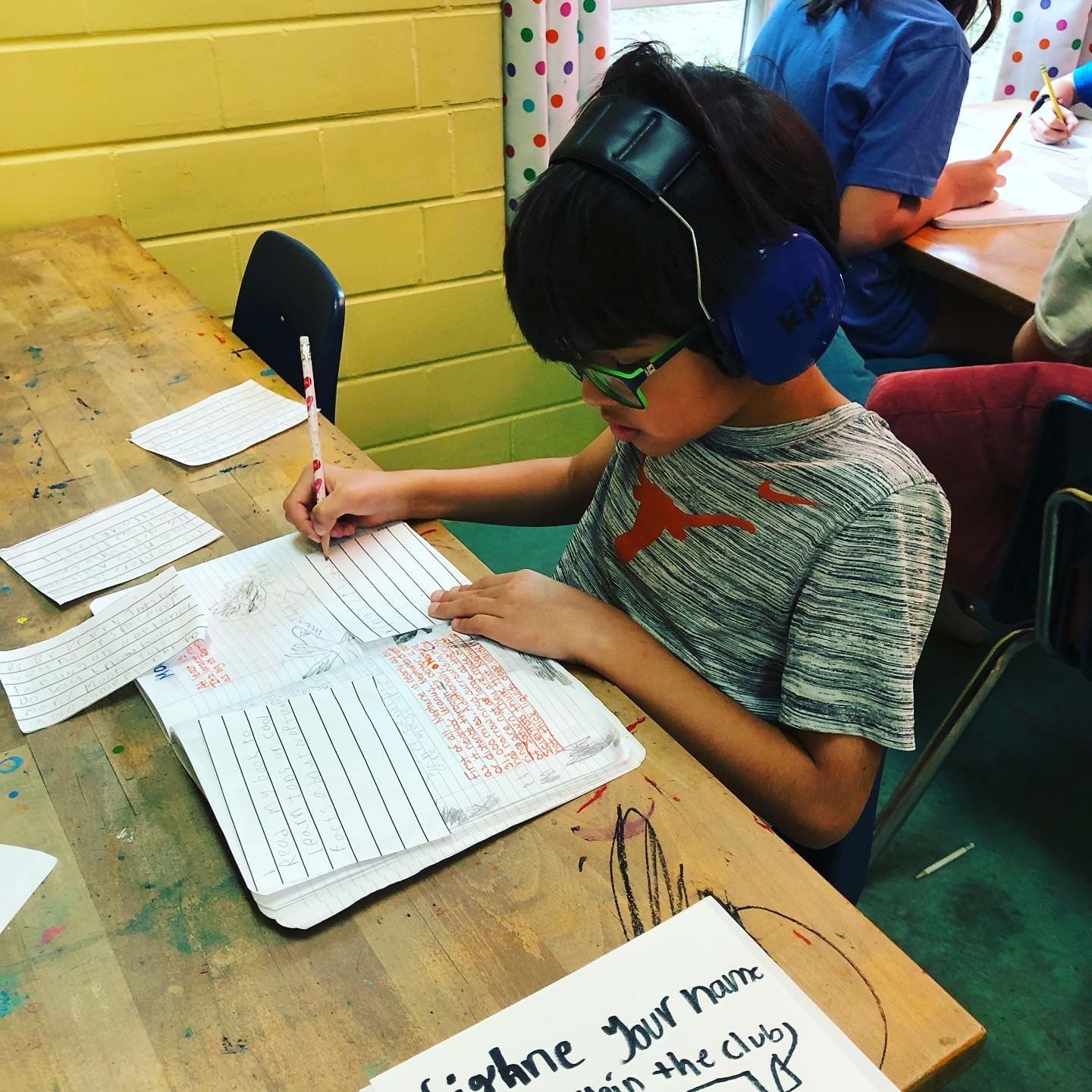 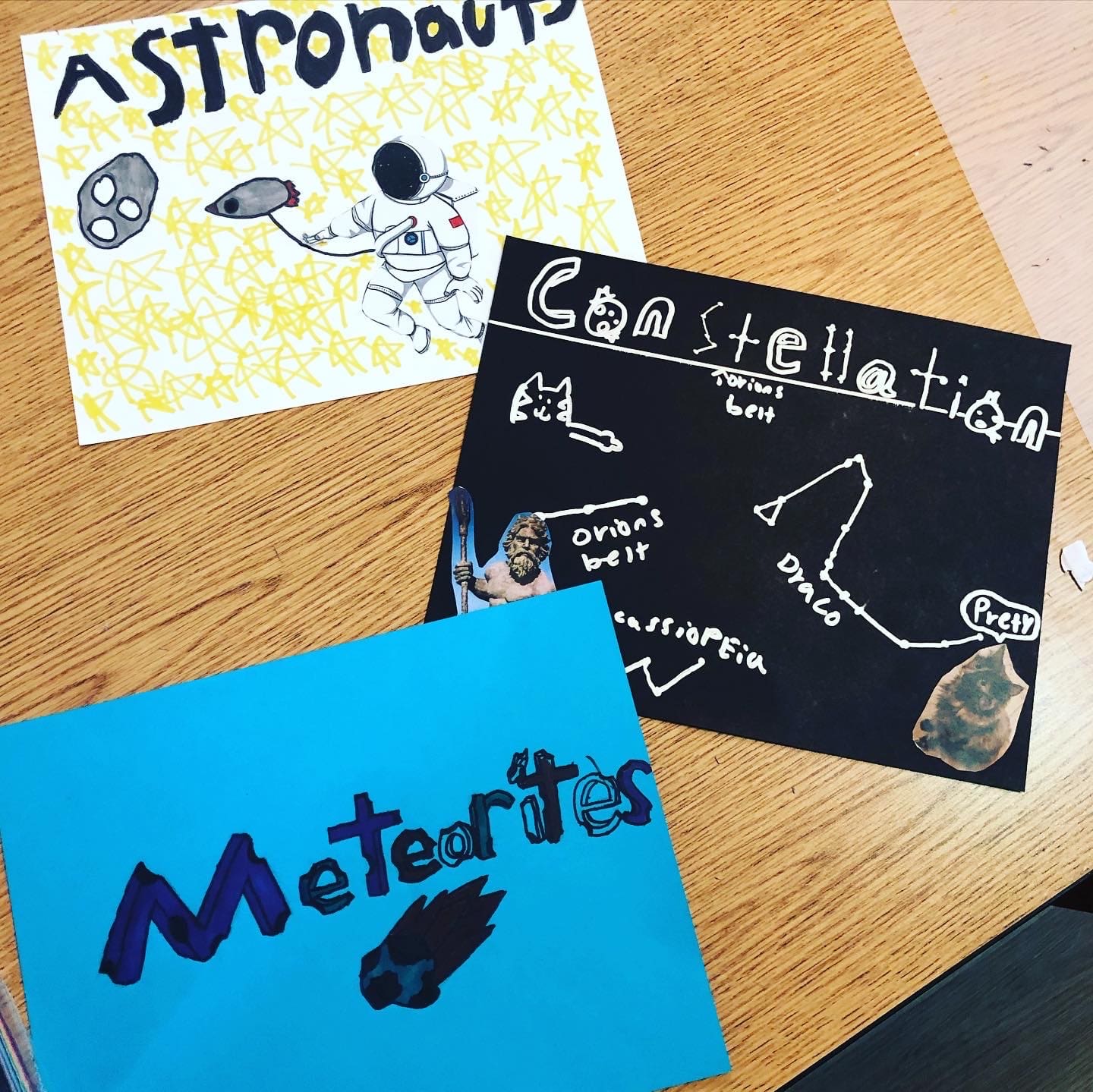 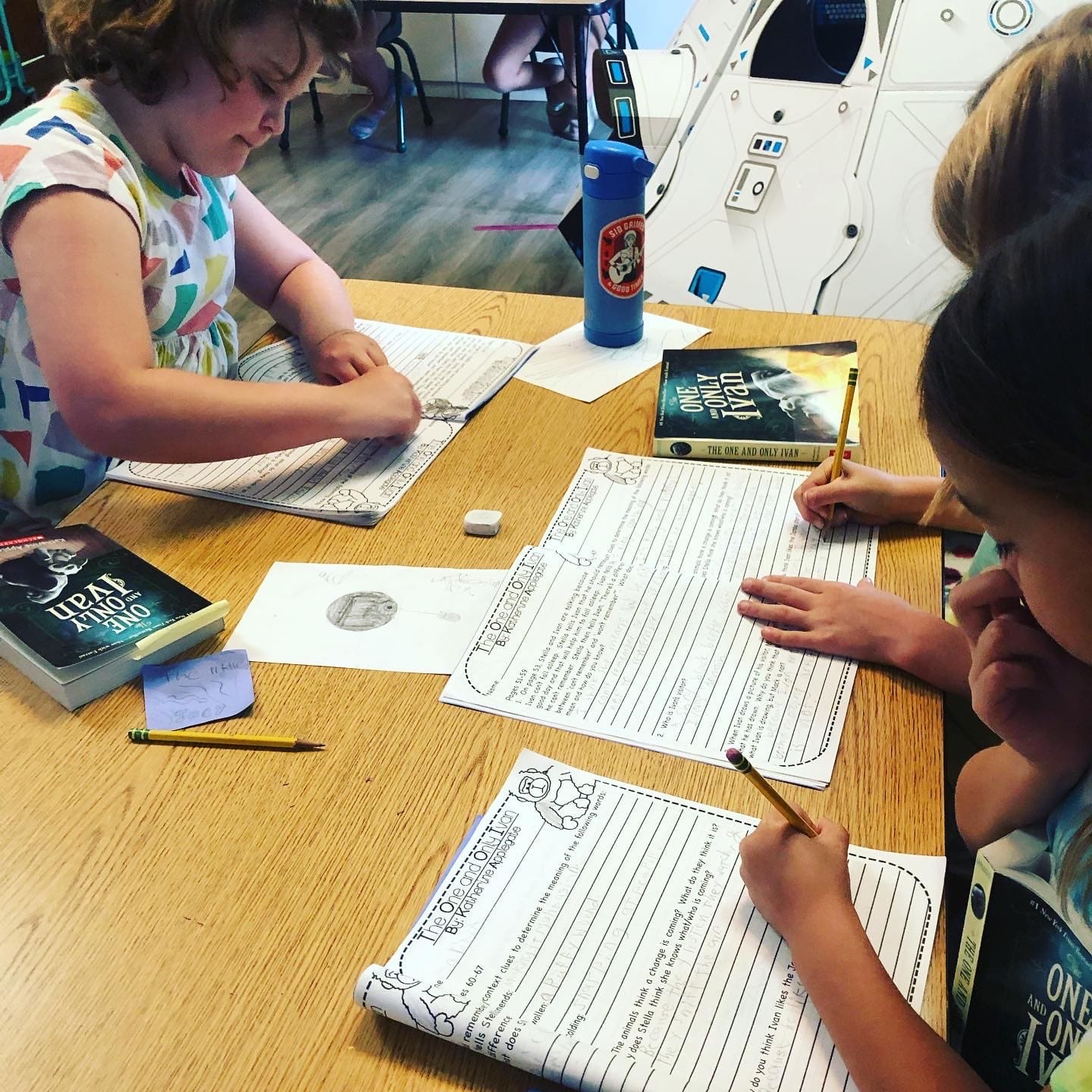
|
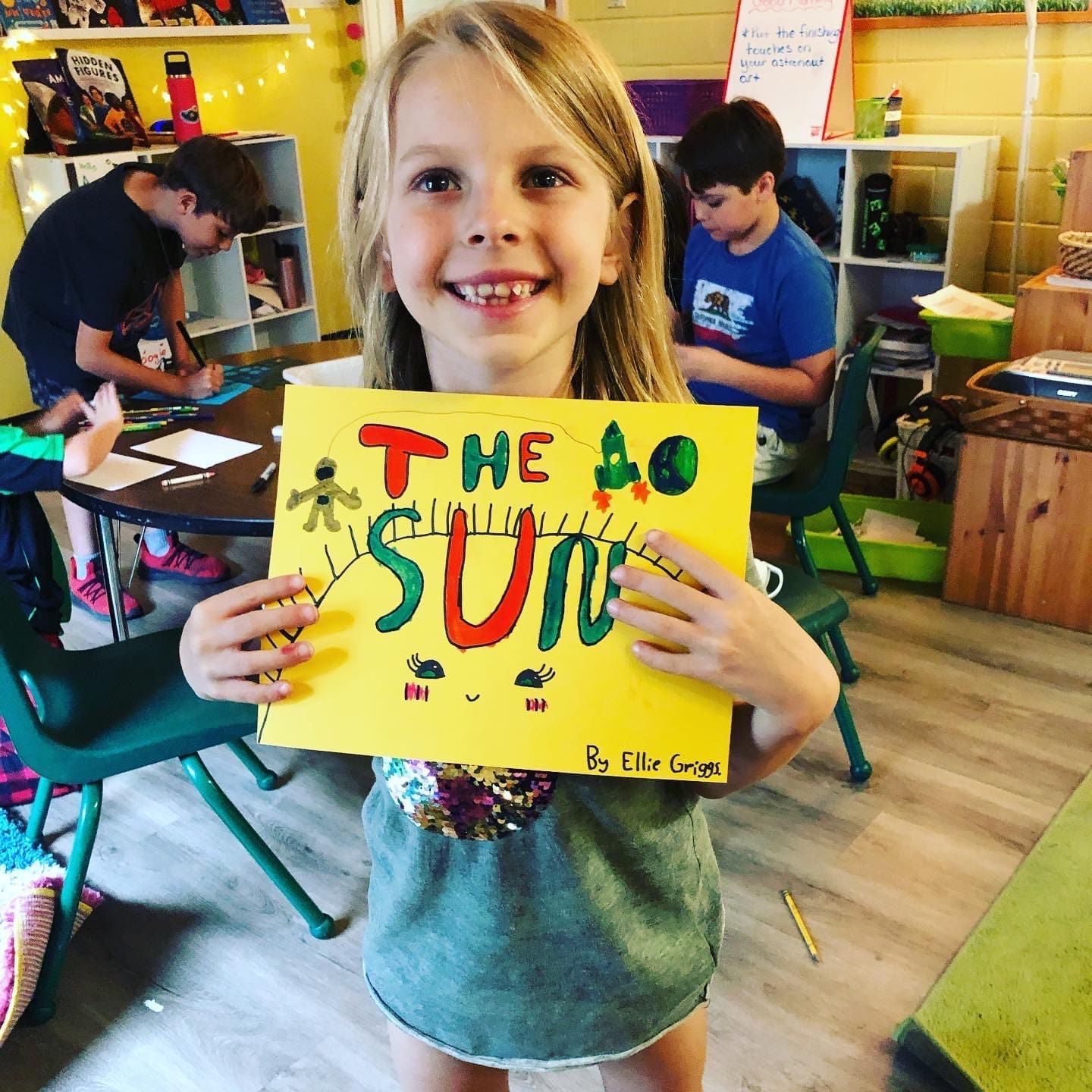  
|
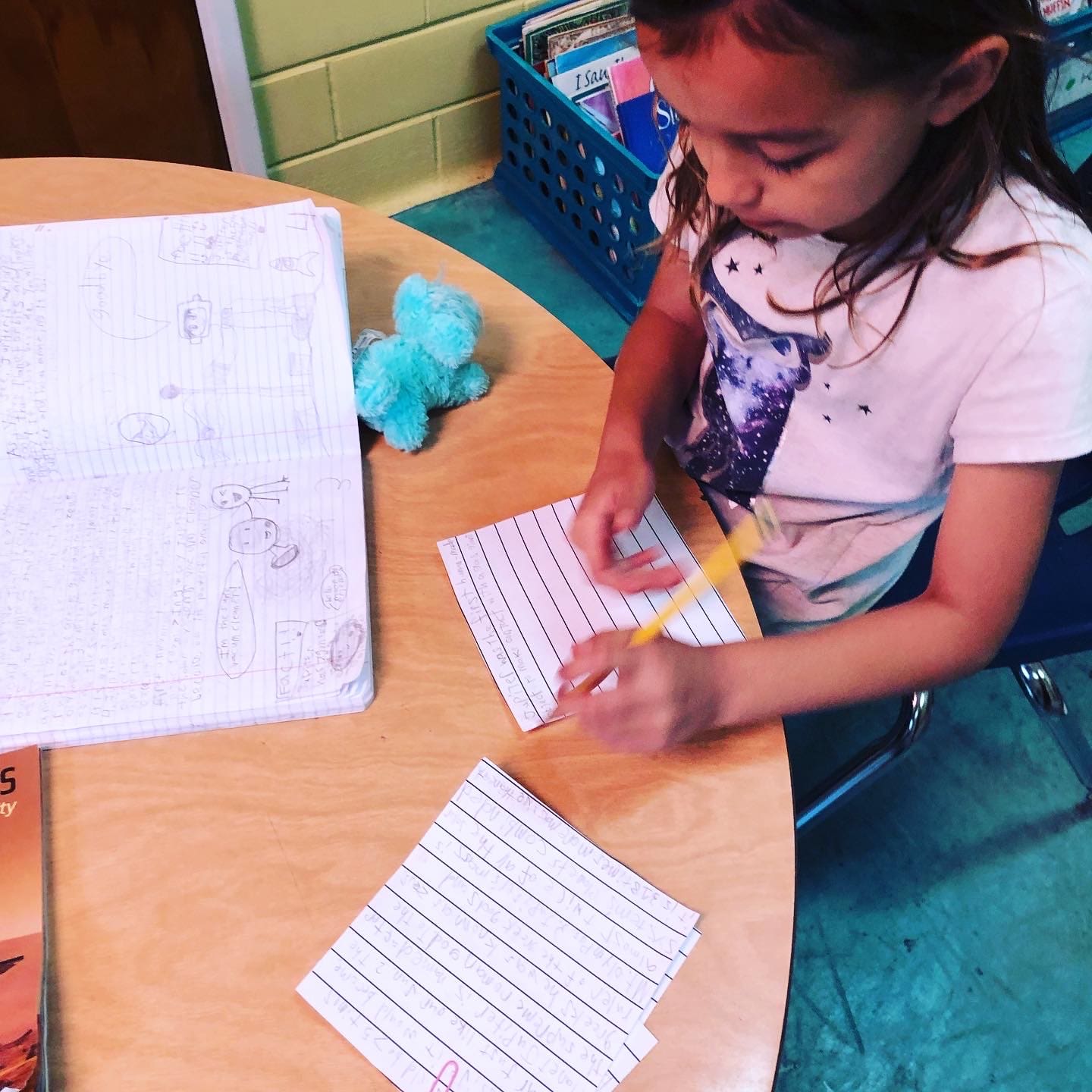  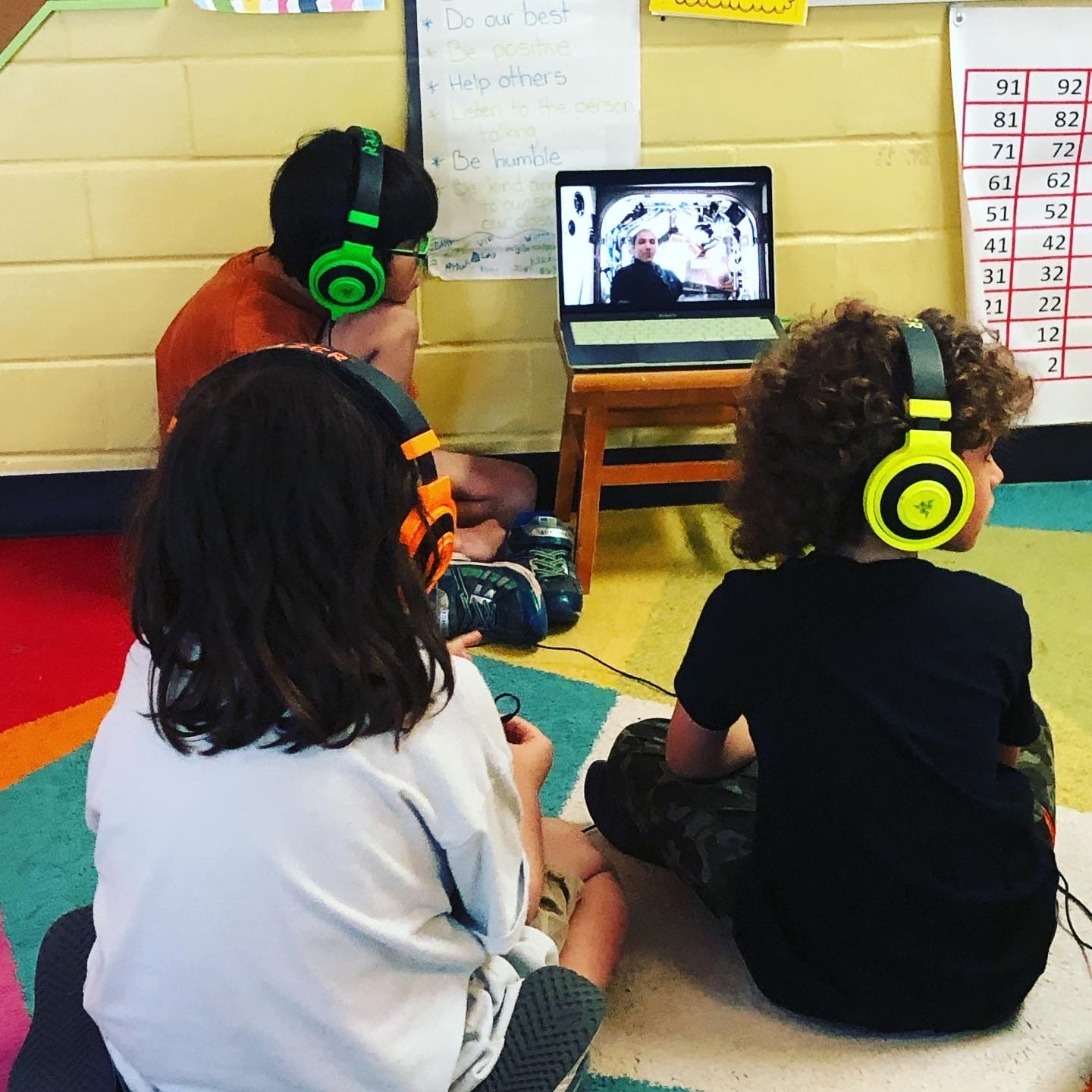
|
|---|
Theme –
Last week we blasted off to the first four planets in our solar system, the rocky planets, so this week we visited the remaining four, our outer gas giants! First up was Jupiter! Jupiter is the largest planet in the Solar System and is the fifth planet from the sun. It is more than 300 times more massive than Earth and is more than two times as massive than all the other planets combined. Its surface is made up of a thick layer of hydrogen gas. Jupiter’s surface is very violent with massive hurricane-like storms, winds, thunder and lightning. One storm on Jupiter, called the Great Red Spot, is three times the size of earth. The Great Red Spot has been storming for hundreds of years. The energy powering Jupiter’s storms isn’t from the sun, but is from radiation generated by Jupiter itself. We did a quick experiment to replicate The Great Red Spot using milk, food coloring and a drop of dish soap!
Next up was Saturn! Saturn is the sixth planet from the sun. It is most famous for its beautiful giant rings. Saturn is the second largest planet in the solar system after Jupiter. It is only slightly smaller than Jupiter in diameter, but is much smaller in mass. Saturn is made up of mostly hydrogen with some helium. Overall, Saturn is the least dense planet in the solar system. It is the only planet that is less dense than water, meaning it would actually float on a (huge) ocean of water. Saturn’s rings are made up of mostly ice particles with some dust and rocks as well. There are billions of these particles and they vary in size from specs of dust to rocks as big as a bus. The rings are located around Saturn’s equator. Many people think the rings are solid but it is an illusion. What you are seeing are the particles moving so fast it looks solid! We demonstrated it with a cube tied to the end of a string. When swung very quickly the one object makes a ring!
Moving on to Uranus! Uranus is the seventh planet from the sun and an ice giant (instead of a gas giant). It’s mostly made of flowing icy materials above a solid core. Uranus has a thick atmosphere made of methane (hence the tooty smell!) hydrogen, and helium. Uranus is the only planet that spins on its side. The core of the planet has such powerful pressures and relatively high temperatures that it turns the carbon particles to diamonds. These are circulated into the atmosphere due to the many layers of clouds the planet has, that it rains diamonds. Uranus gets its blue-green color from methane gas in the atmosphere. Sunlight passes through the atmosphere and is reflected back out by Uranus’ cloud tops. Methane gas absorbs the red portion of the light, resulting in a blue-green color.
Last stop, Neptune! Neptune is the eighth and now the most distant planet (sorry, Pluto) and is a cold and dark world nearly 3 billion miles from the Sun. The planet Neptune is named after the Roman god of the sea. In Greek mythology, he is known as Poseidon. The planet was probably given this name due to its blue appearance. Like other gas giants, Neptune has a ring system, six of them to be exact, but they are faint. Neptune also has 14 confirmed moons. The weather on Neptune is very active. Sometimes dark spots form in the atmosphere, which are basically storms the size of Earth, how crazy is that?
 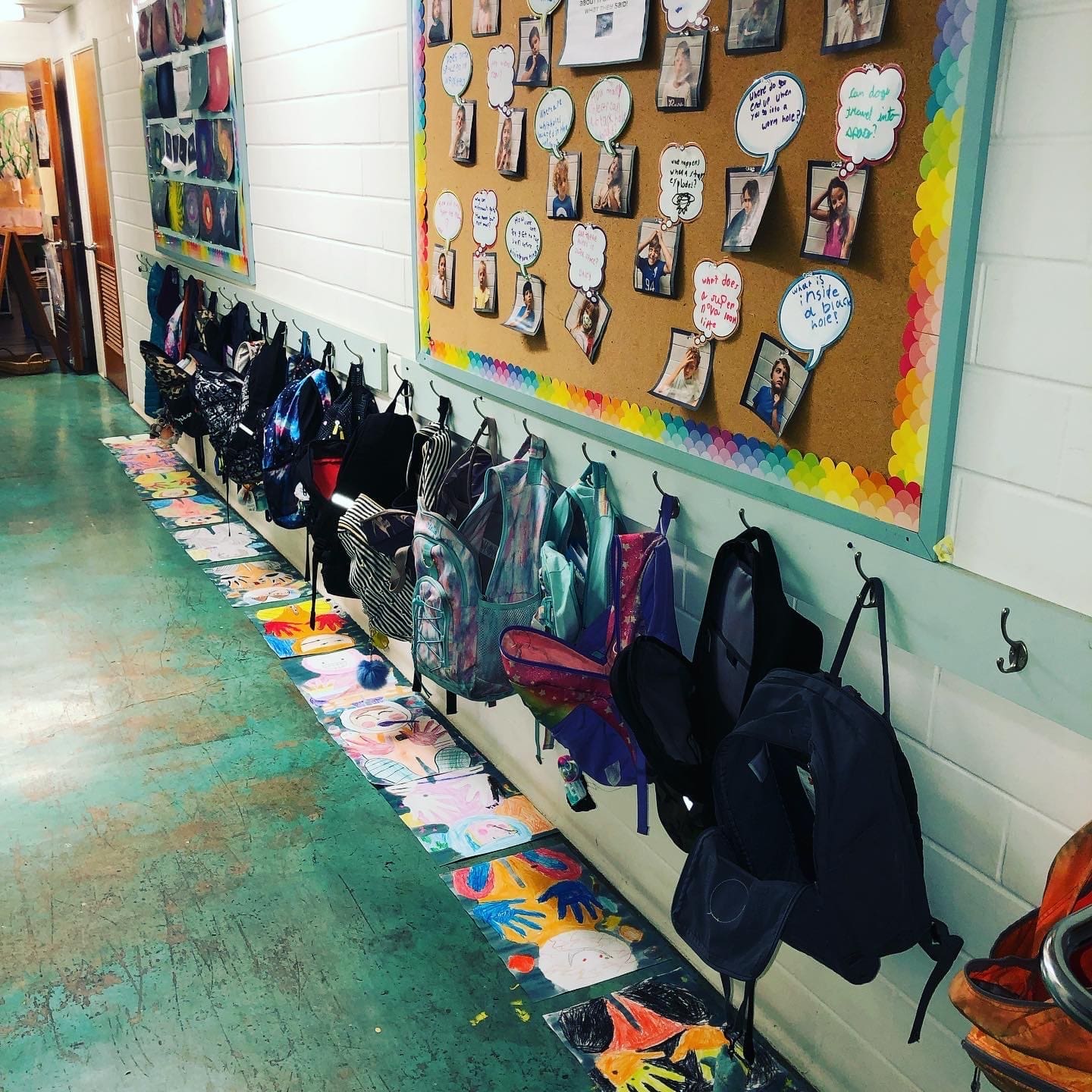 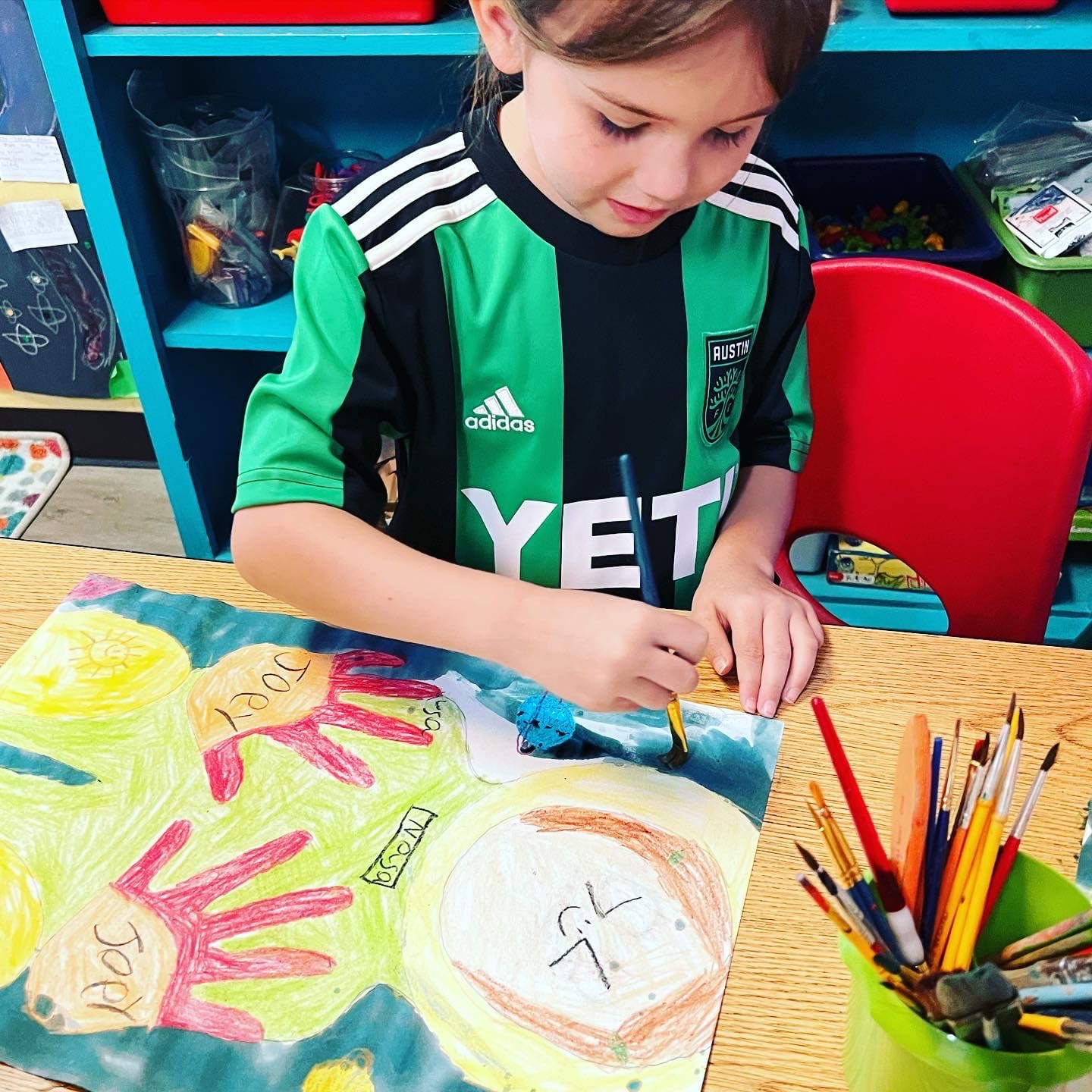
|
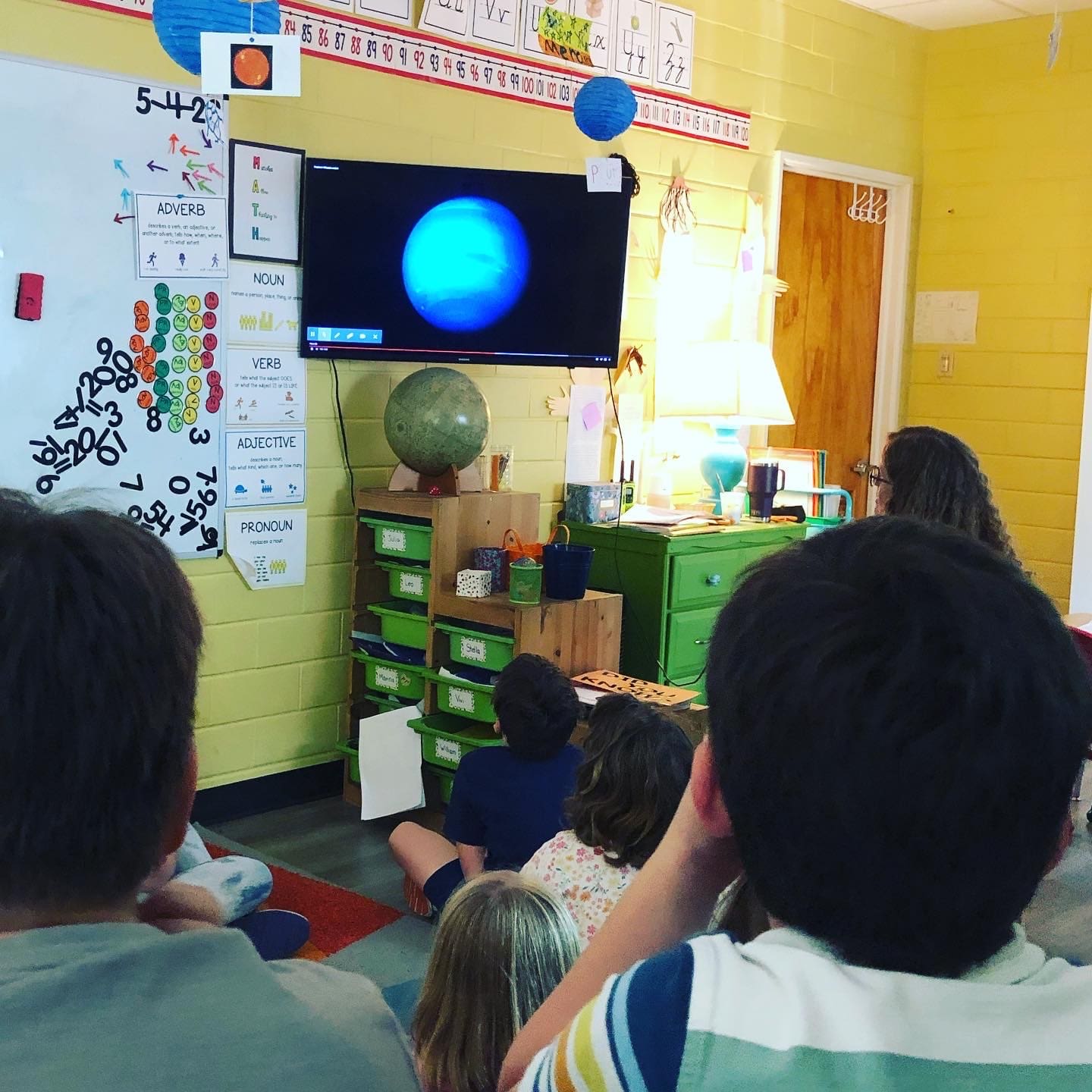 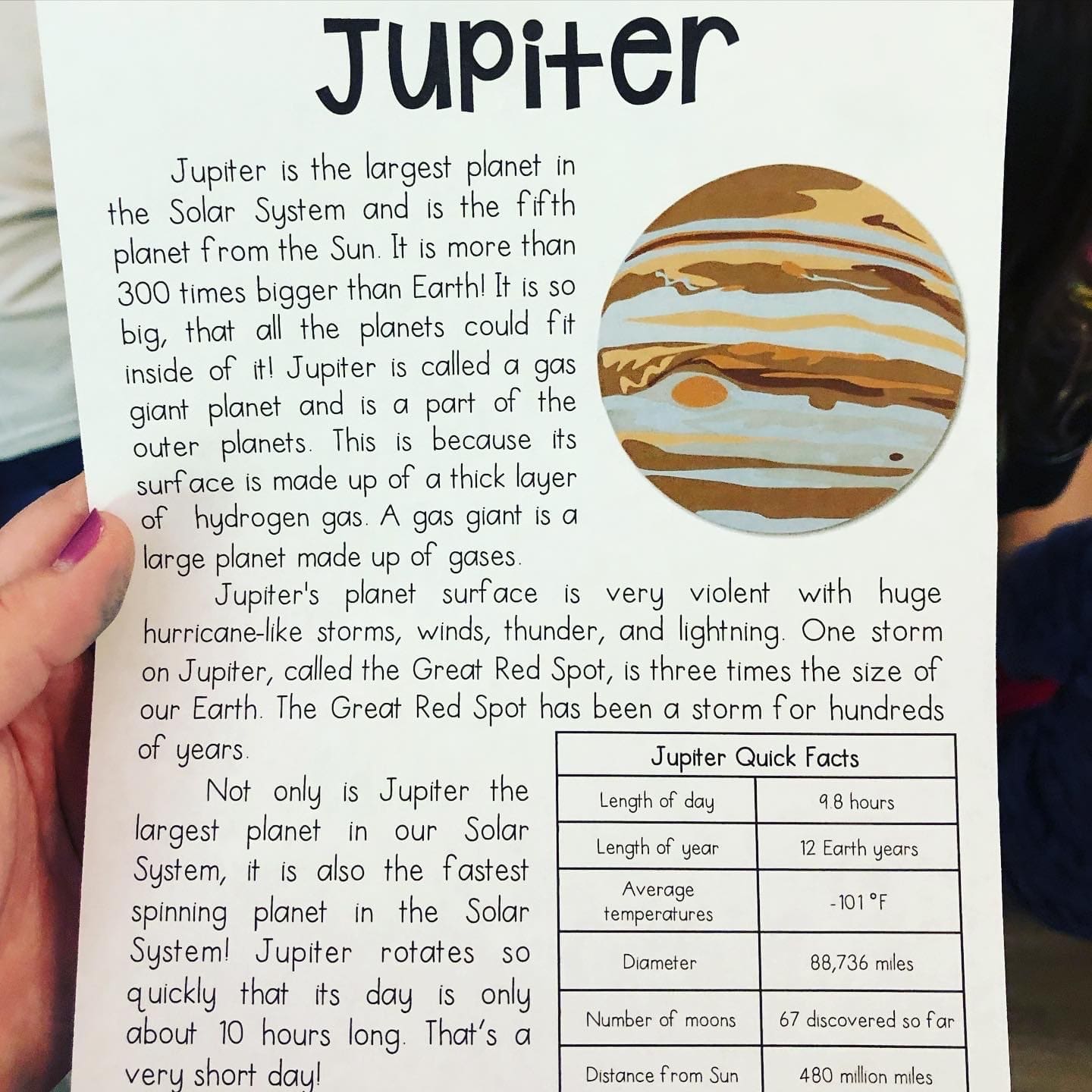 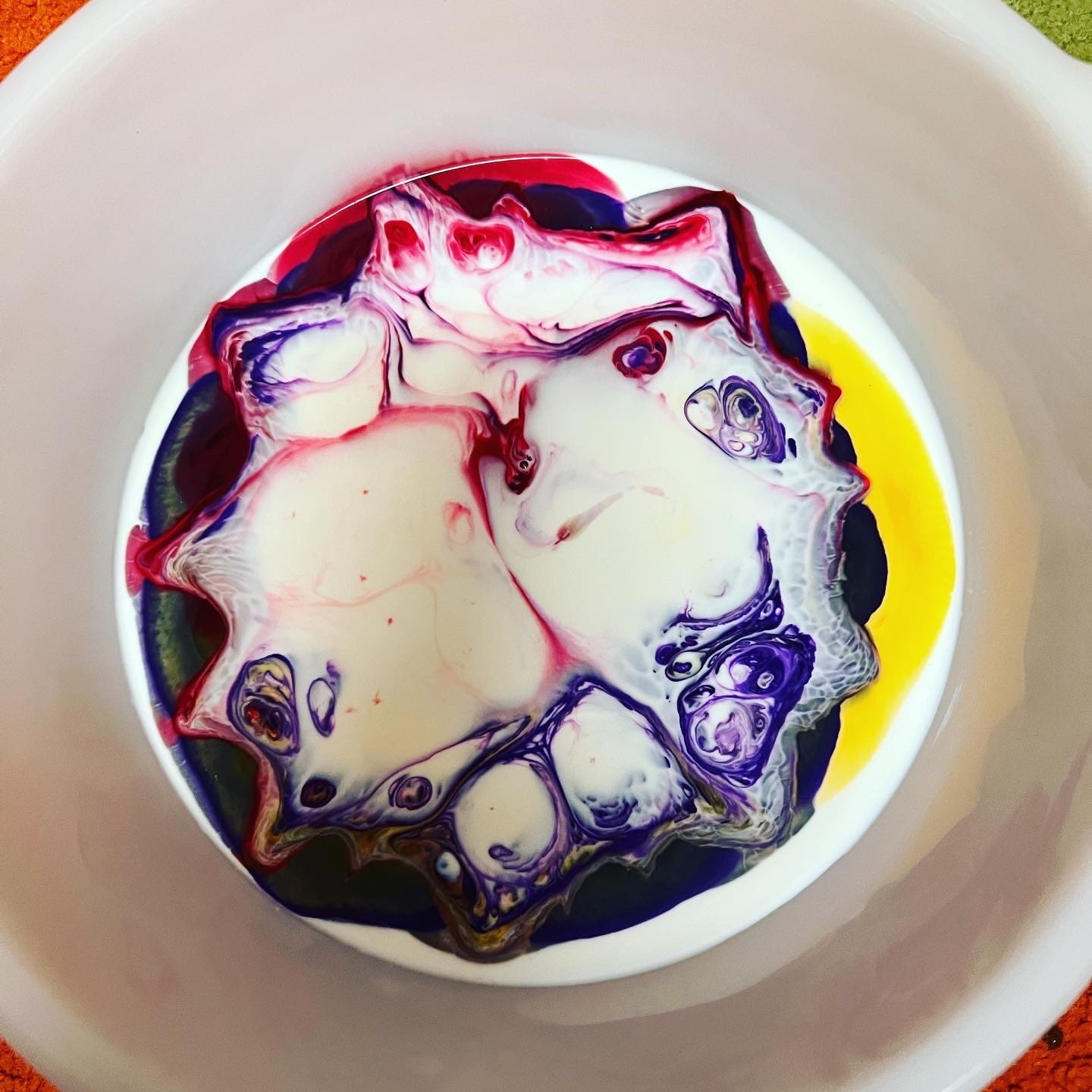
|
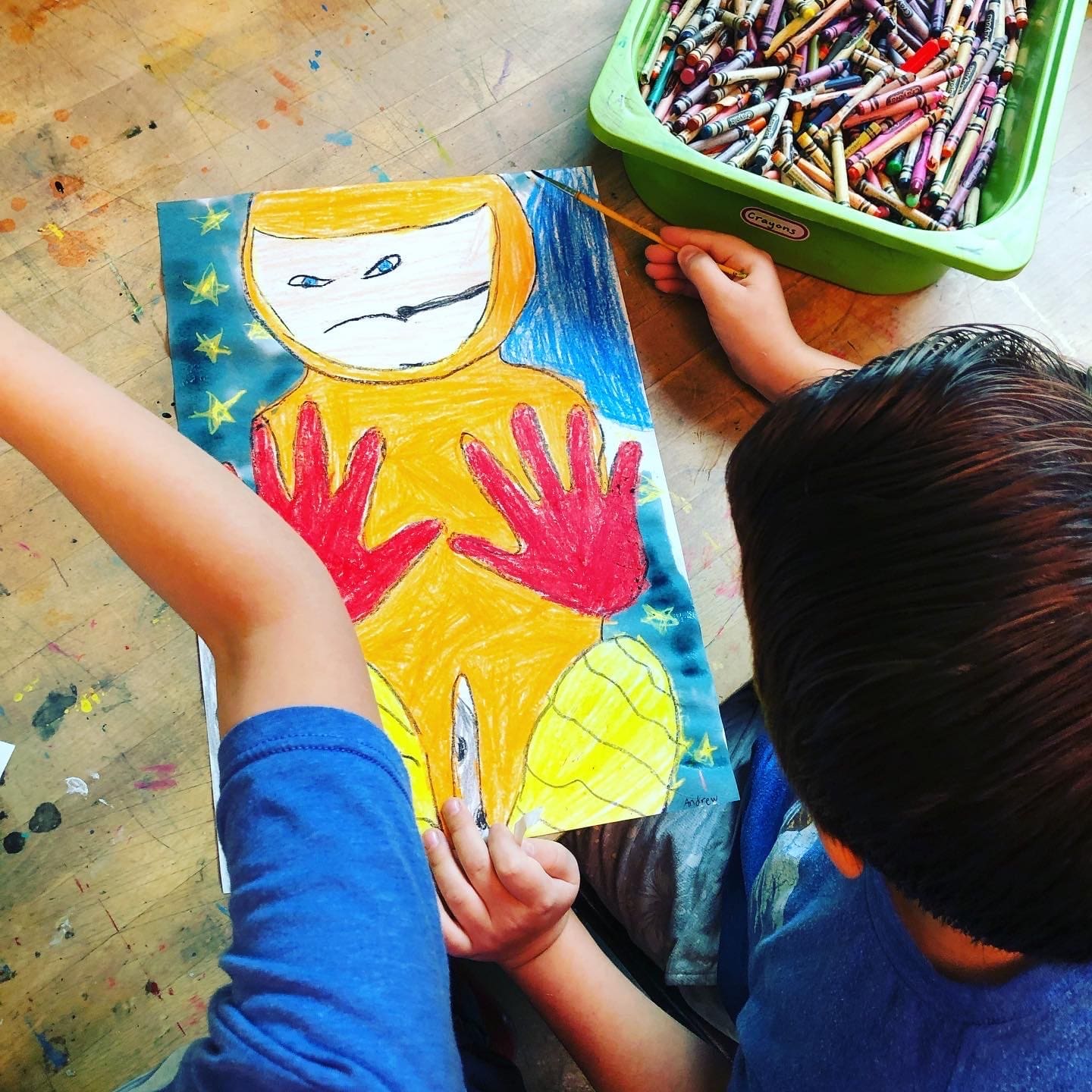 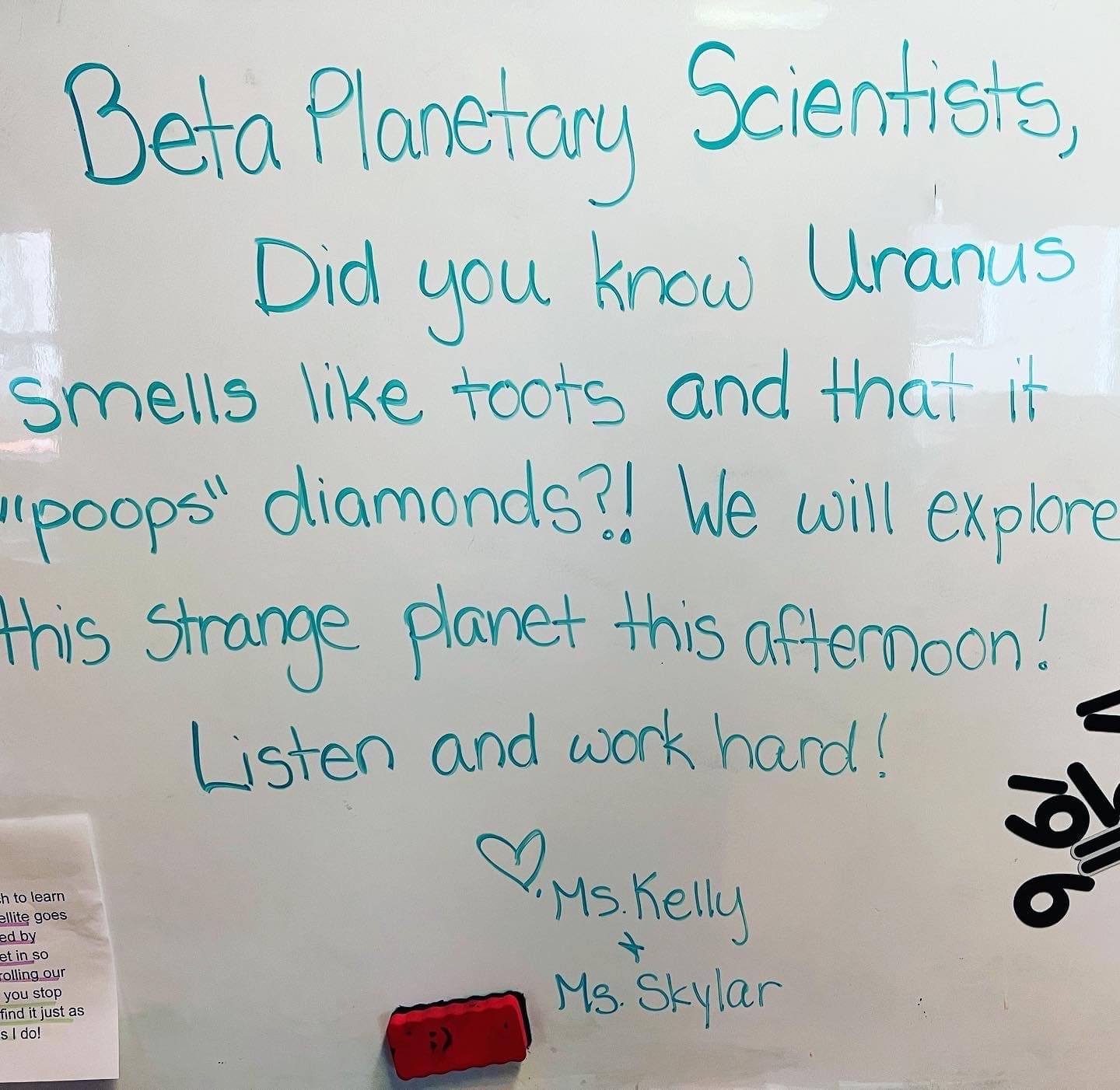 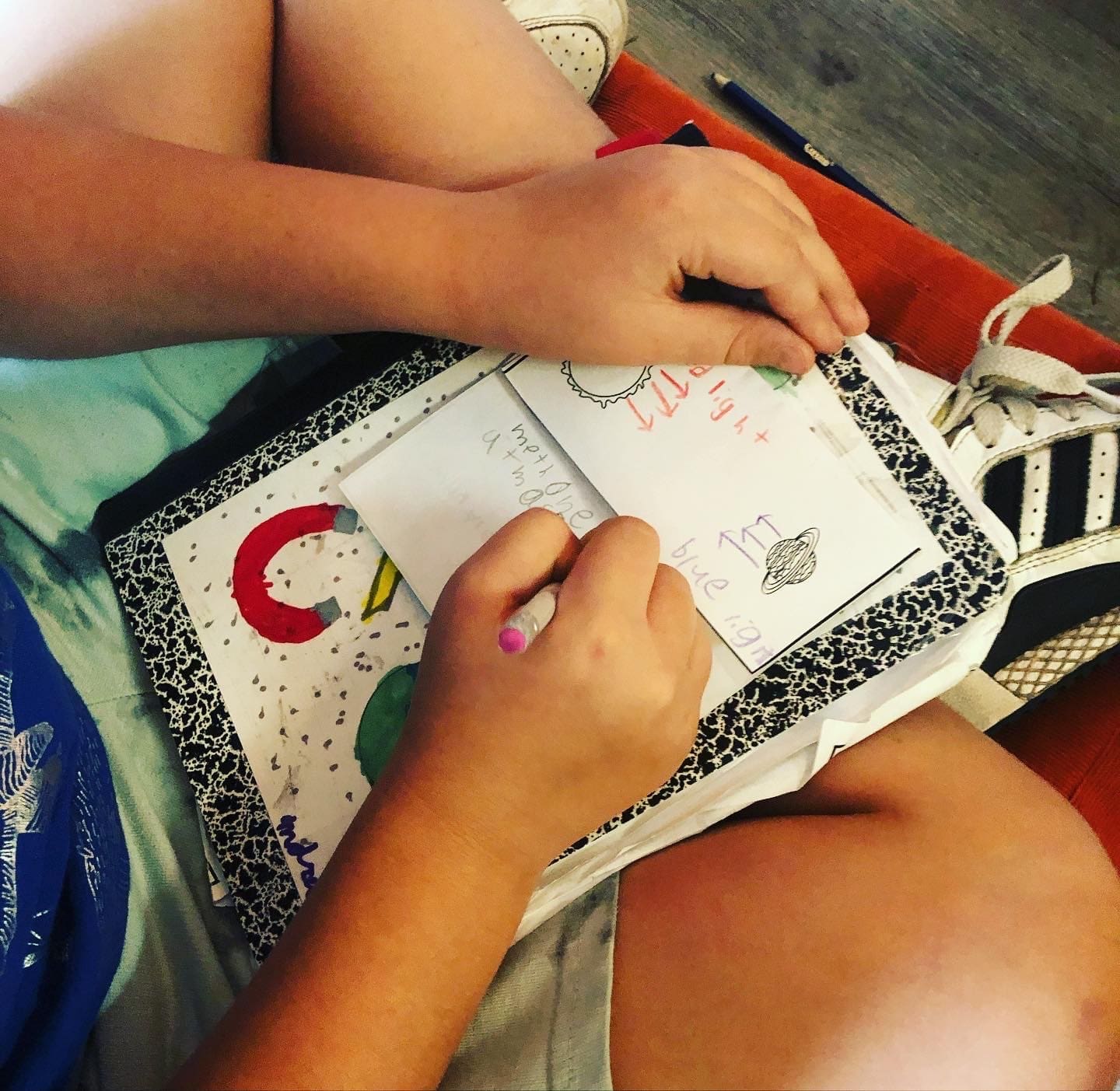
|
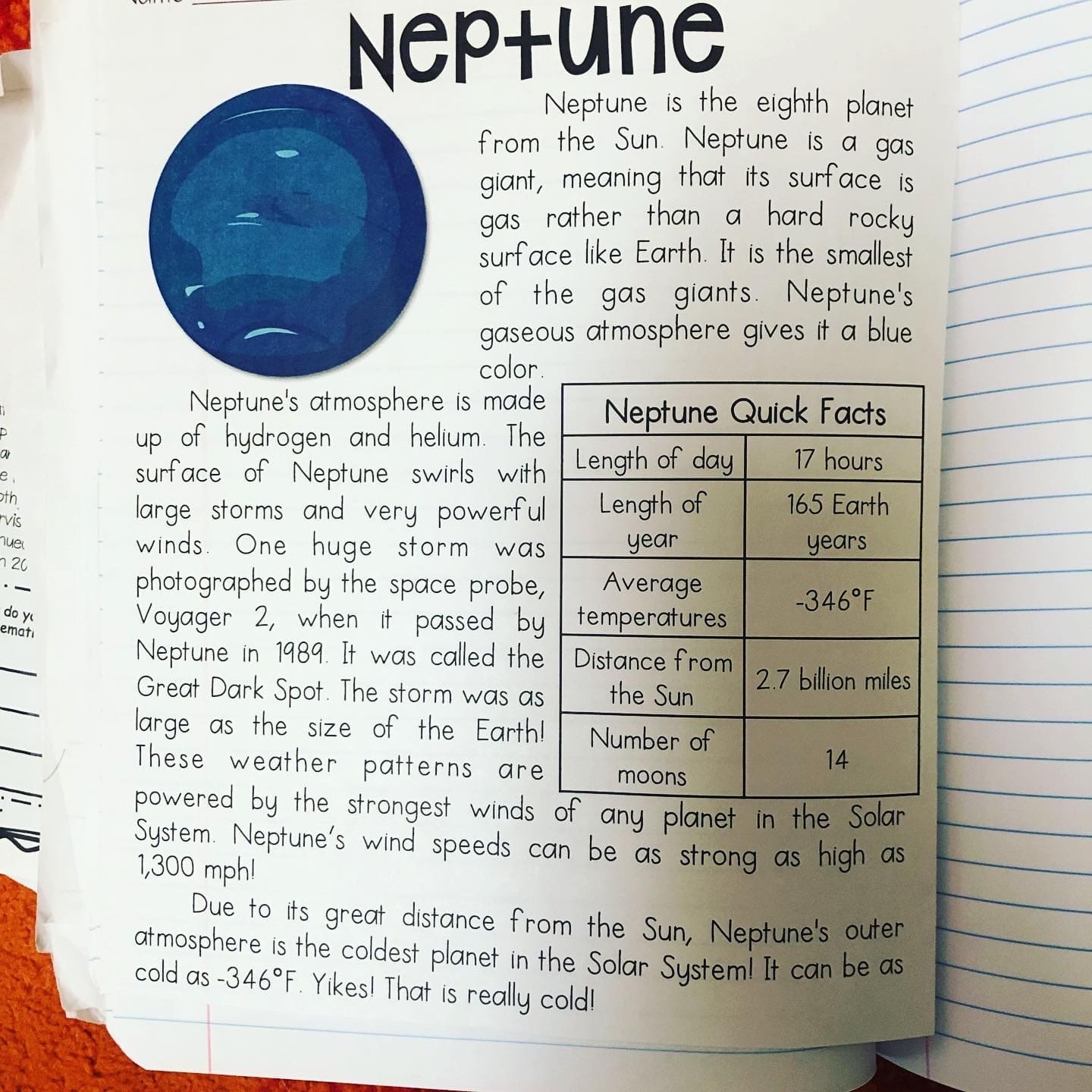 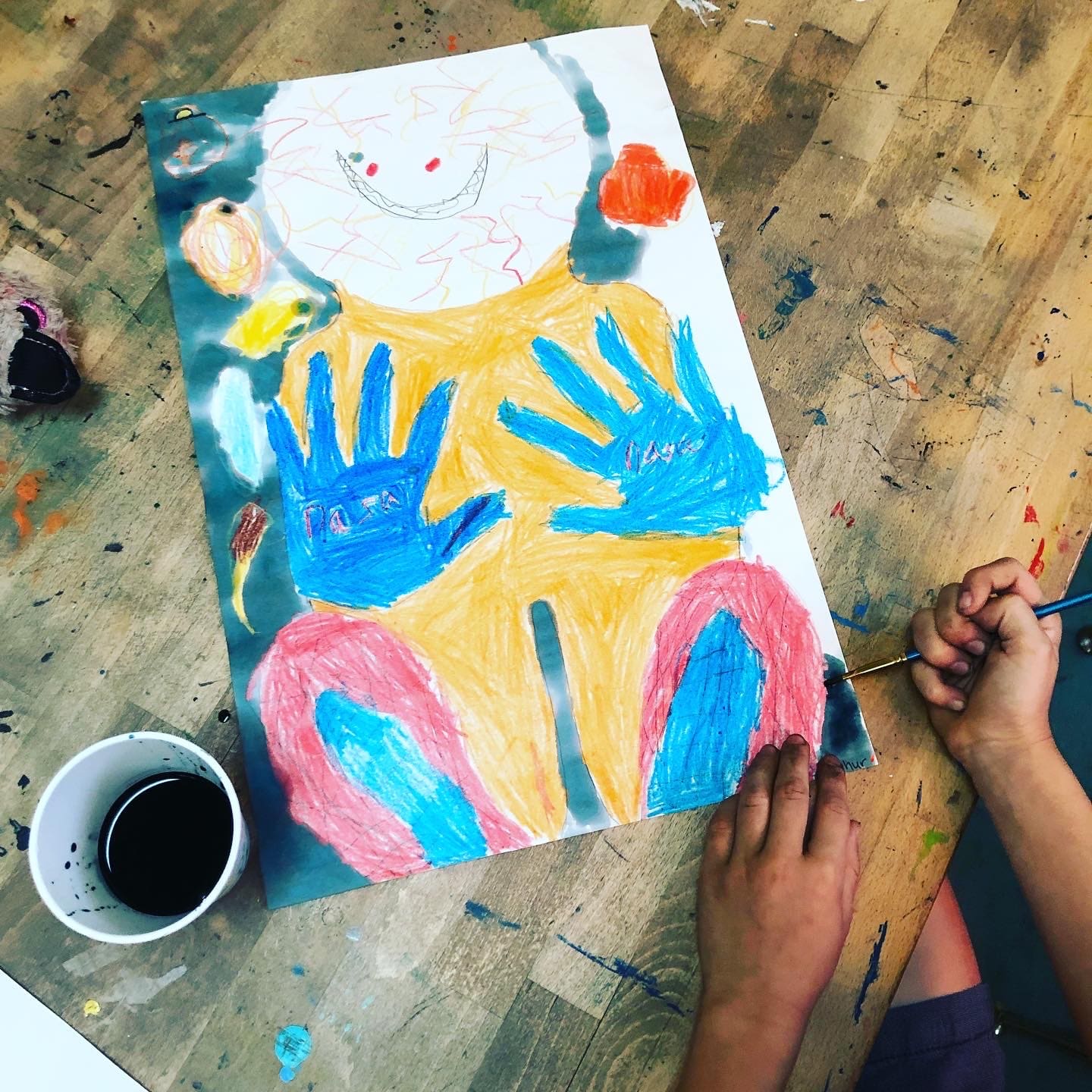 
|
|---|
Thank you for making us feel so loved this week💖


